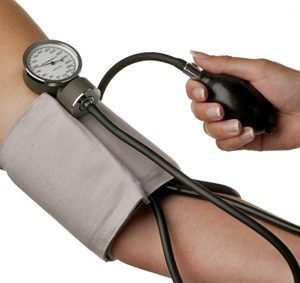 A new U.S. Preventive Services Task Force (USPSTF) recommendation says that while they recommend screening for high blood pressure in adults aged 18 years or older, they also recommend that high blood pressure levels should generally be confirmed with home or ambulatory blood pressure monitoring before starting treatment for hypertension. This is because many factors can influence readings in an office, including "white coat hypertension" - which is an elevated reading from the stress of being in the doctor's office. The USPSTF evaluates, reviews, and makes evidence-based recommendations about clinical preventive services such as screenings, counseling services, and preventive medications. From Medical Xpress:
A new U.S. Preventive Services Task Force (USPSTF) recommendation says that while they recommend screening for high blood pressure in adults aged 18 years or older, they also recommend that high blood pressure levels should generally be confirmed with home or ambulatory blood pressure monitoring before starting treatment for hypertension. This is because many factors can influence readings in an office, including "white coat hypertension" - which is an elevated reading from the stress of being in the doctor's office. The USPSTF evaluates, reviews, and makes evidence-based recommendations about clinical preventive services such as screenings, counseling services, and preventive medications. From Medical Xpress:
Confirm high blood pressure outside doctor's office, US task force says
High blood pressure levels should generally be confirmed with home or ambulatory blood pressure monitoring before starting treatment for hypertension, a new U.S. Preventive Services Task Force (USPSTF) recommendation says.
Many factors can affect blood pressure readings, such as stress, physical activity and caffeine or nicotine, the USPSTF said. And, some people experience "white-coat hypertension"—an increase in blood pressure at the doctor's office from stress—when having their blood pressure taken. All of these factors can make it hard to tell if someone really has high blood pressure, the researchers said.
That's why the Task Force recommends confirming a diagnosis of high blood pressure, or hypertension, before starting treatment, unless someone has very high blood pressure that needs to be treated right away."For most patients, elevated blood pressure readings in the doctor's office should be confirmed outside the doctor's office before starting treatment," said Task Force vice-chair Dr. Kirsten Bibbins-Domingo.
Blood pressure levels can be confirmed with ambulatory blood pressure monitoring. Your doctor will provide a small, portable device that automatically measures your blood pressure every 20 to 30 minutes over 12 to 48 hours. If this method isn't available, people can take their blood pressure at different times throughout the day using home blood pressure monitoring, the USPSTF said. Ambulatory blood pressure monitoring is the first choice for confirming a diagnosis of high blood pressure, the Task Force said. But, when not available, home monitors are an acceptable alternative.
Home blood pressure monitoring devices can cost from less than $20 to $100 or more, according to Consumers Union. Devices that use upper arm readings—rather than finger or wrist—are considered more accurate, the American Heart Association (AHA) says. But, it's important that the cuff that wraps around your arm fits properly, the AHA advises.
The dangers of sustained high blood pressure include an increased risk for heart attack, stroke, kidney disease and heart failure, the USPSTF said. High blood pressure is a leading cause of death in the United States, particularly among older Americans, Bibbins-Domingo said.
